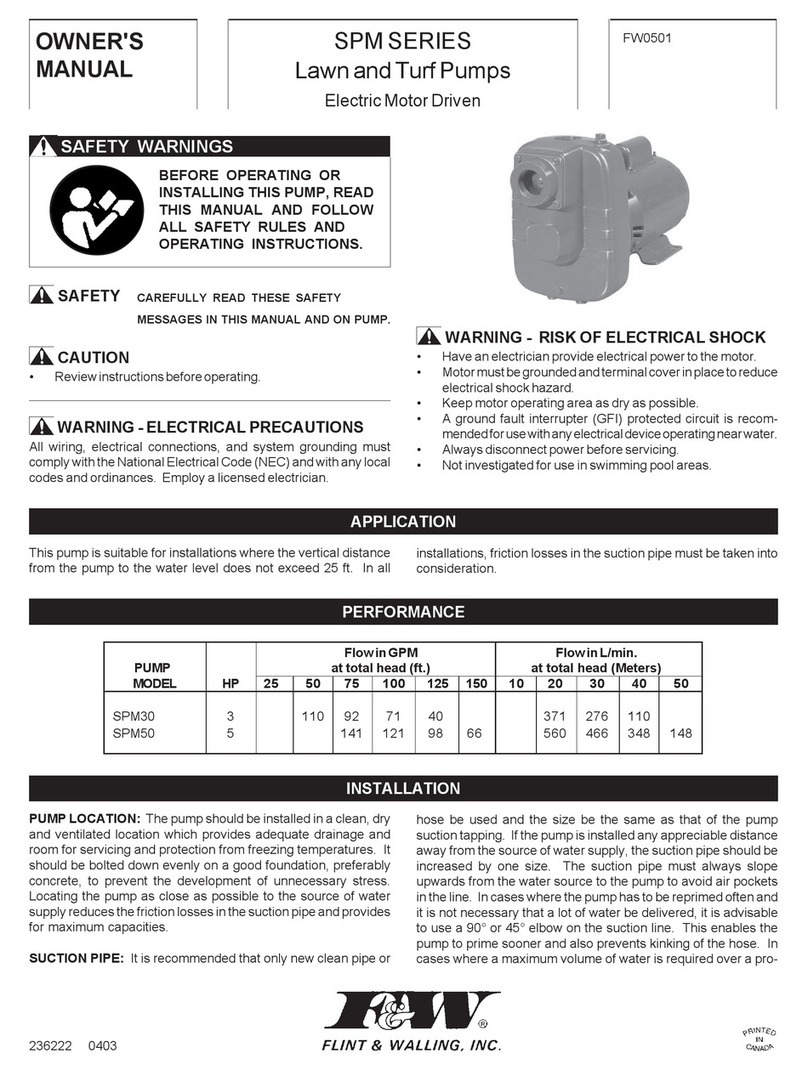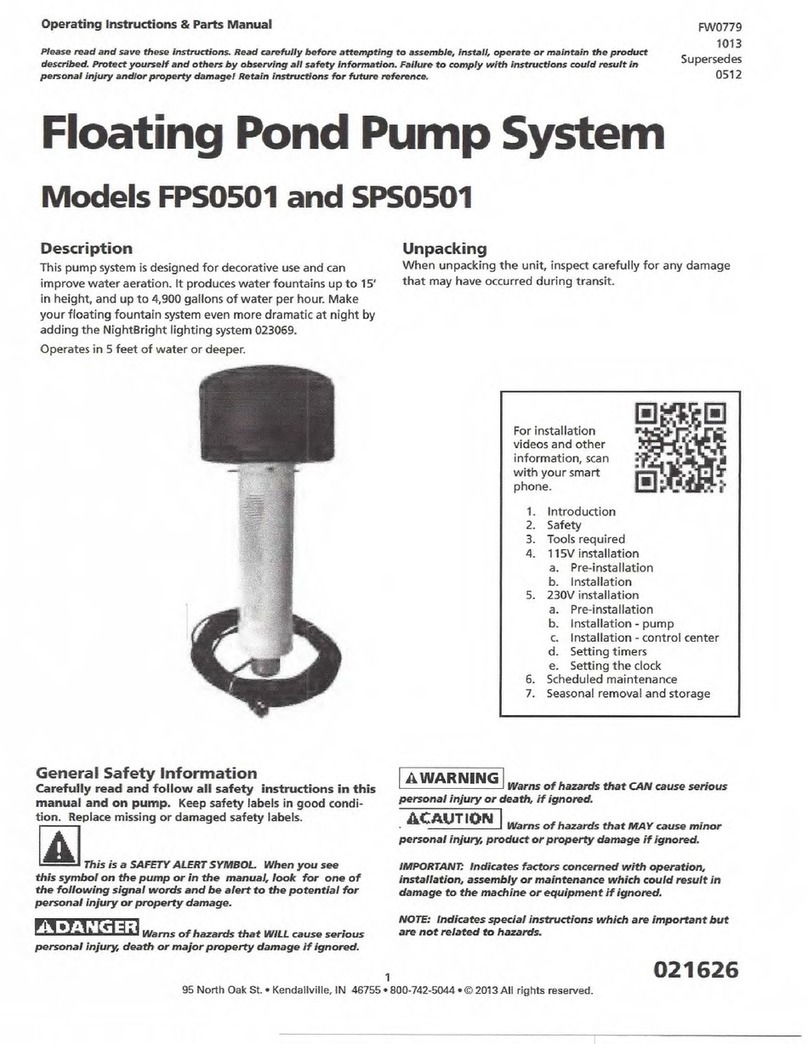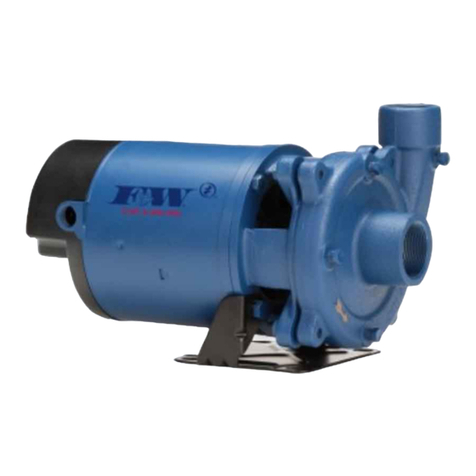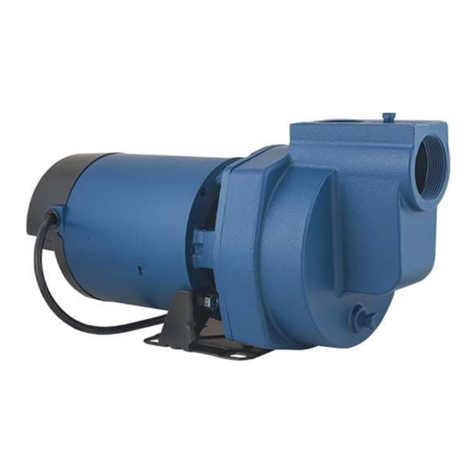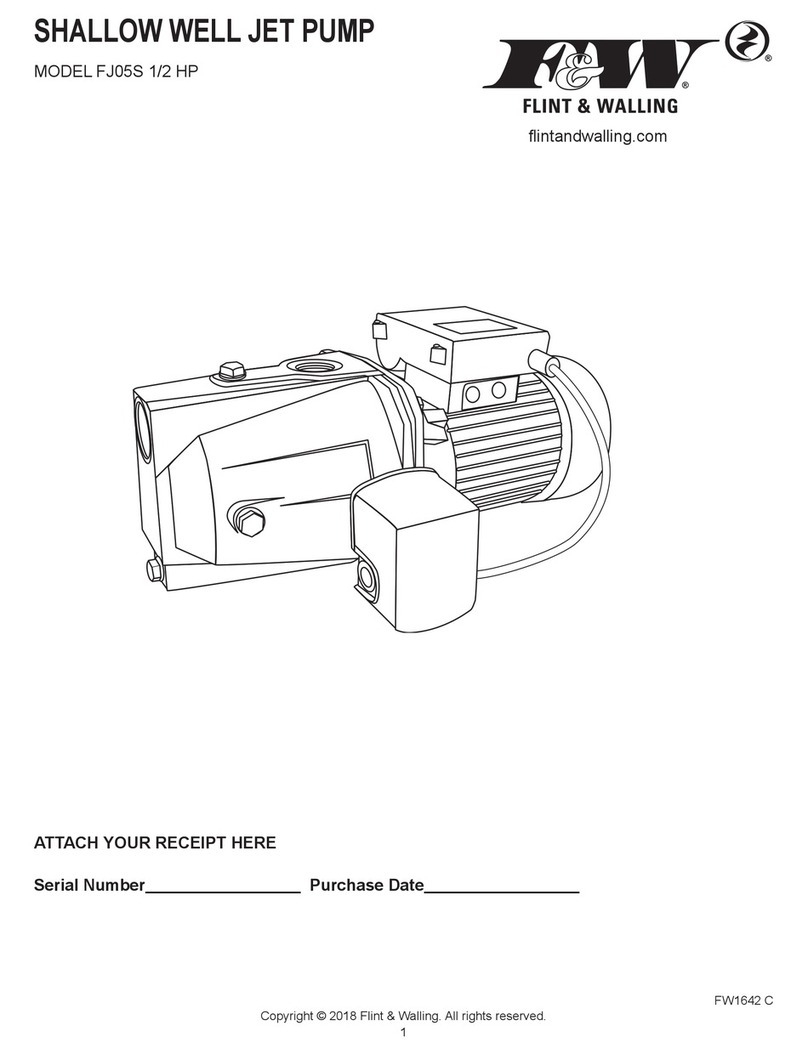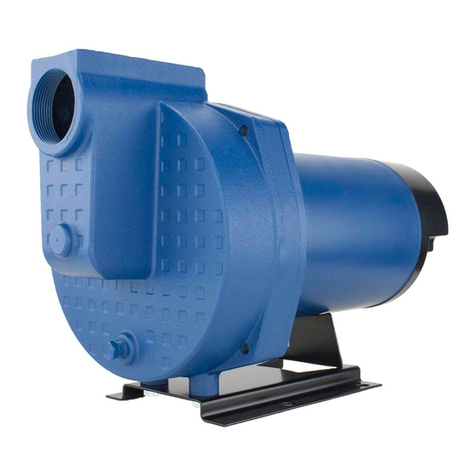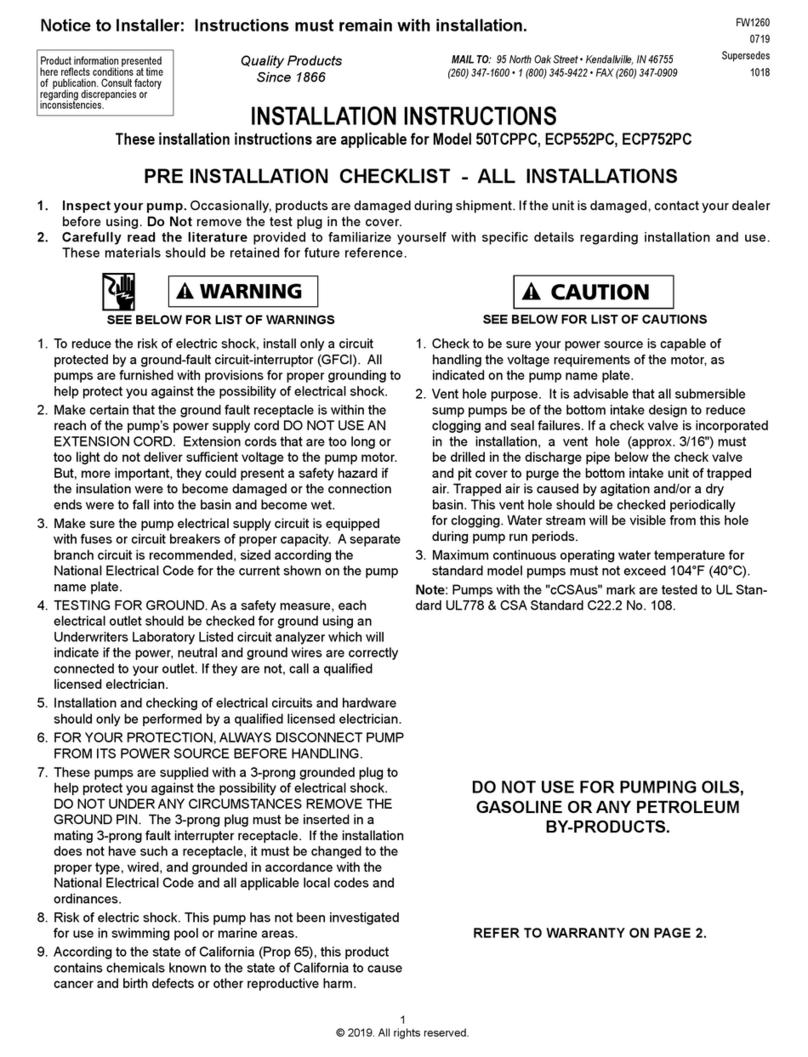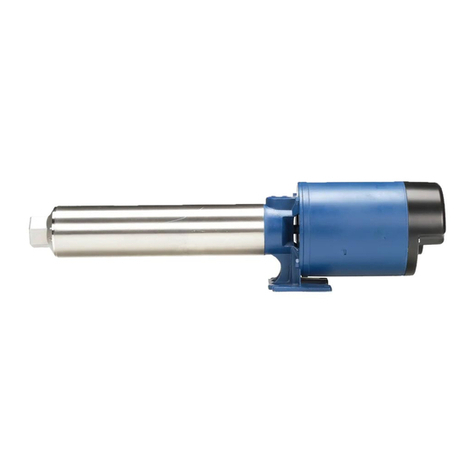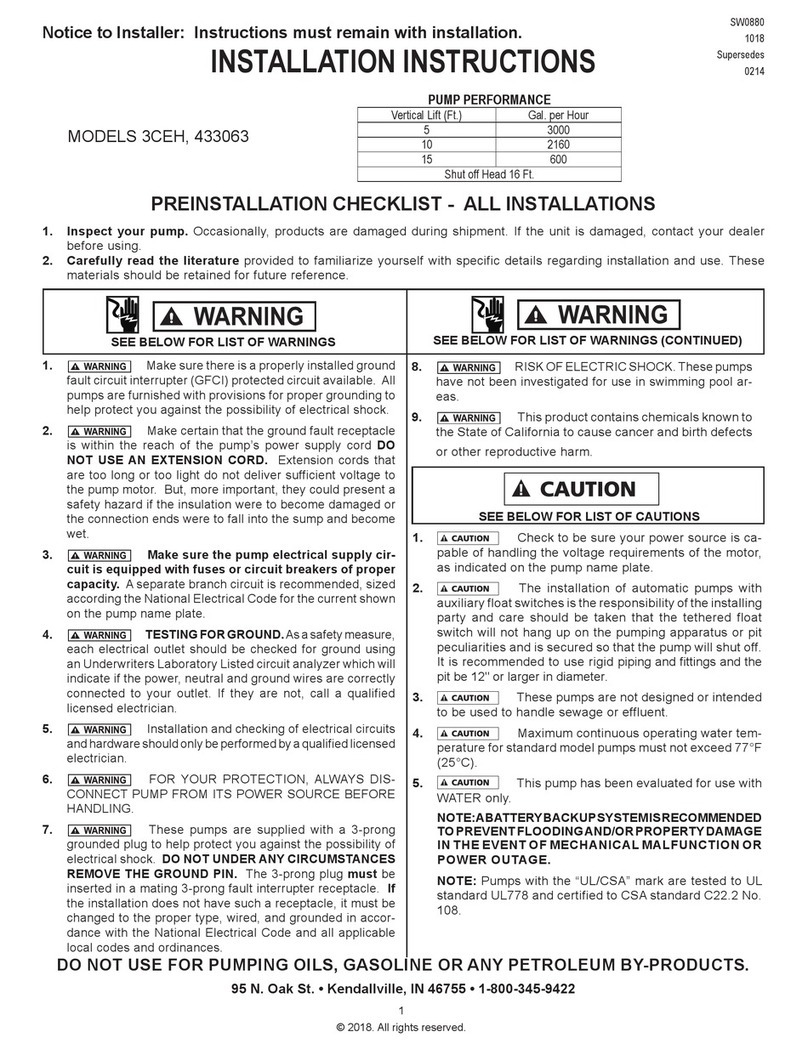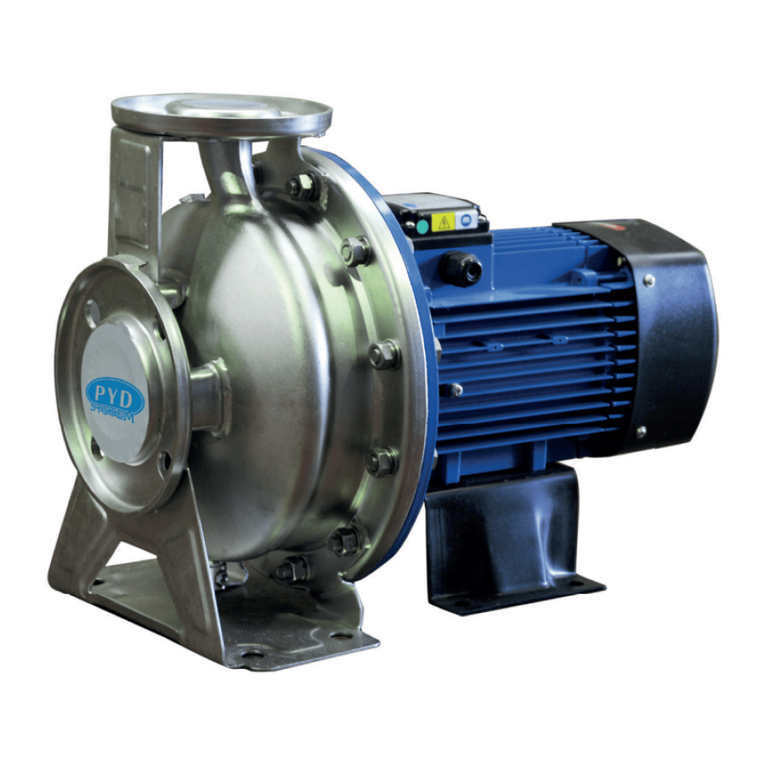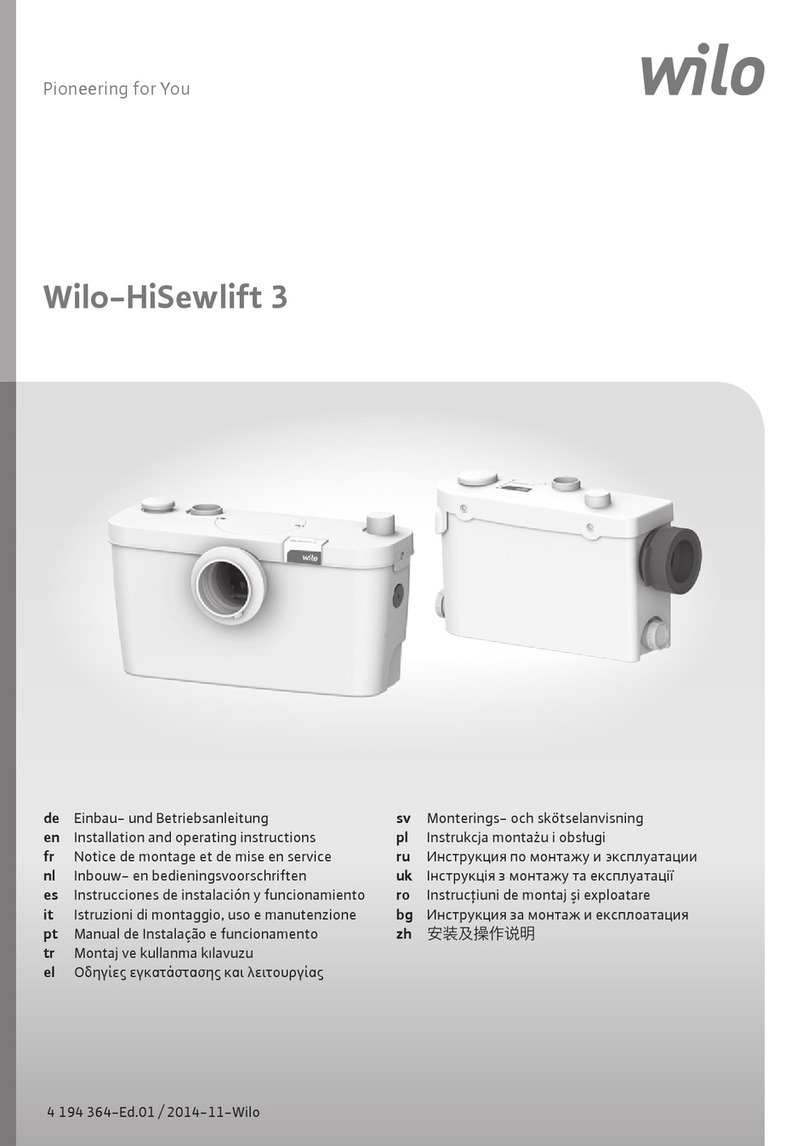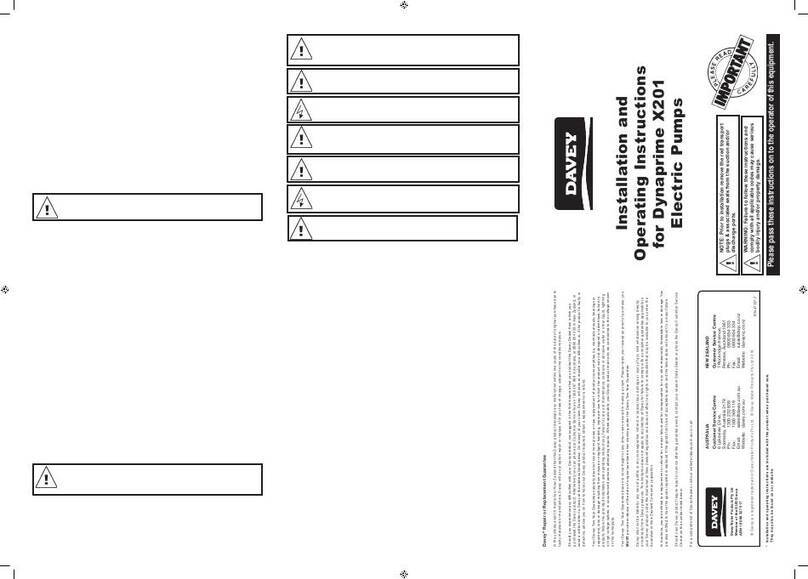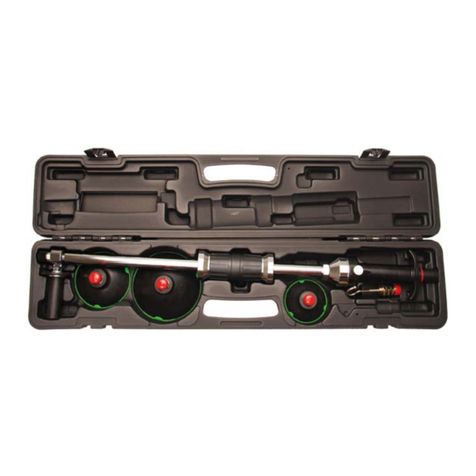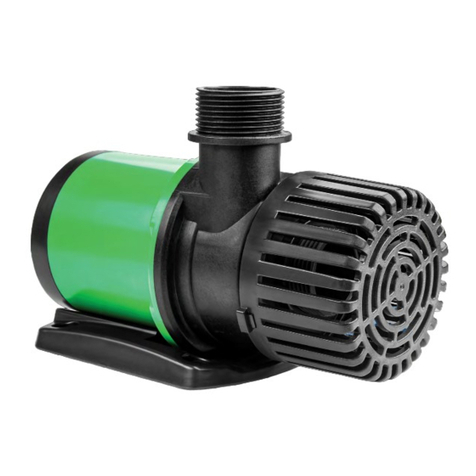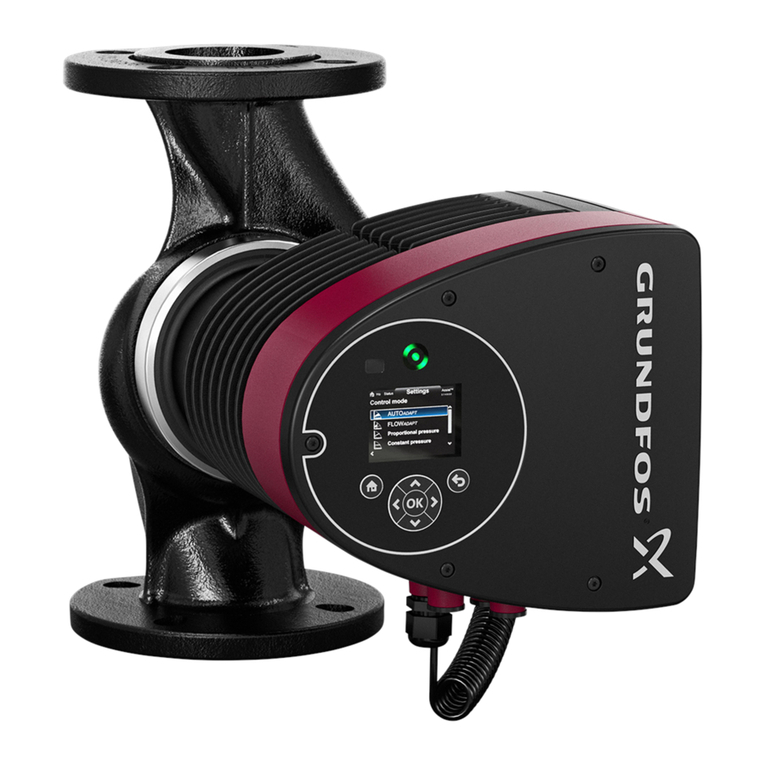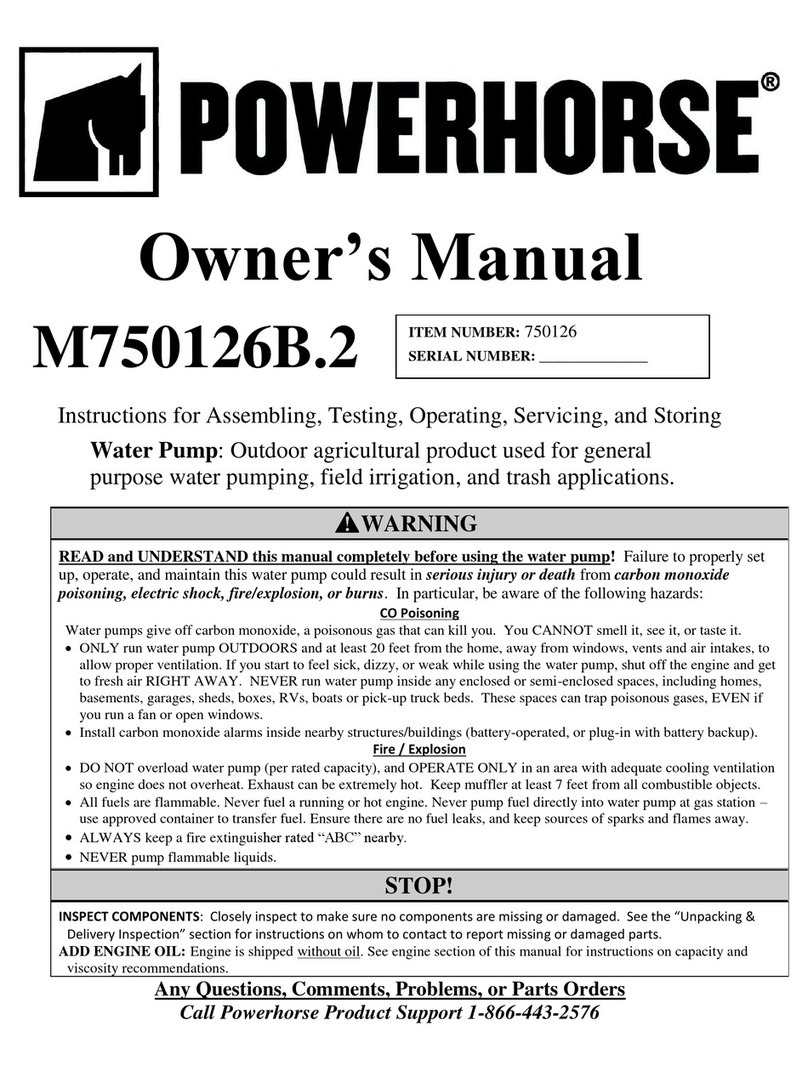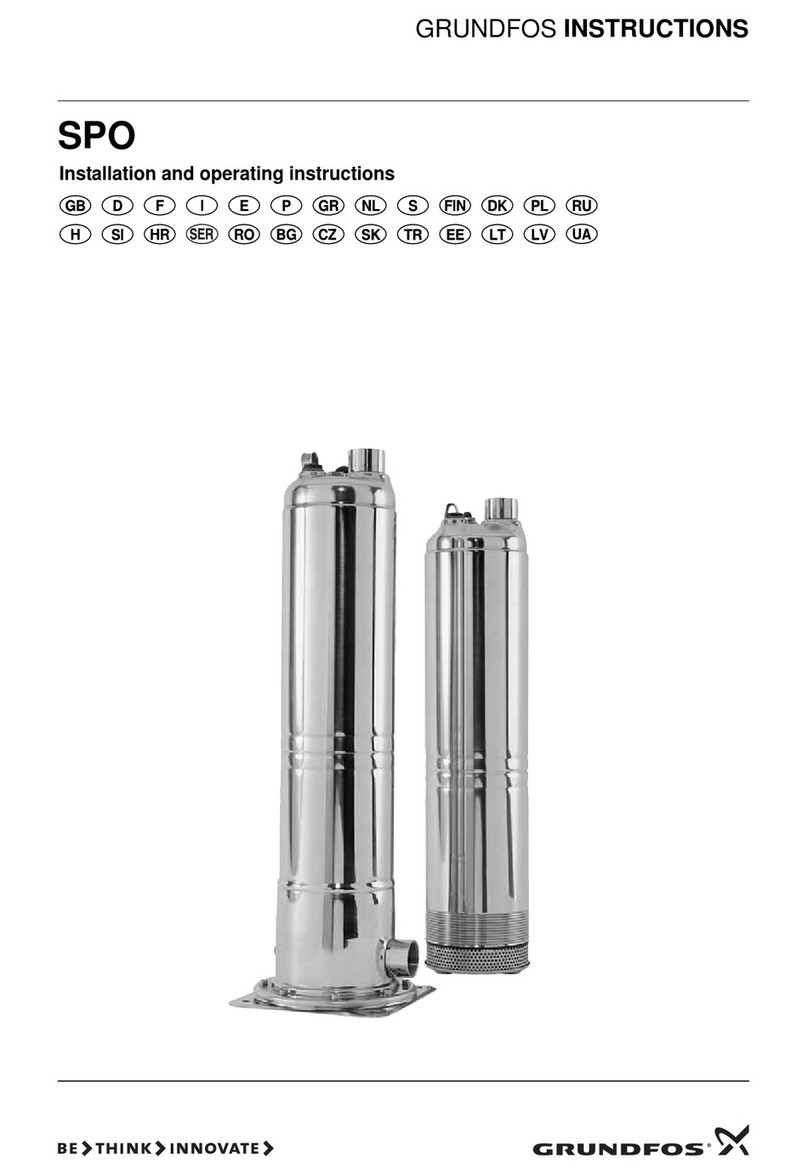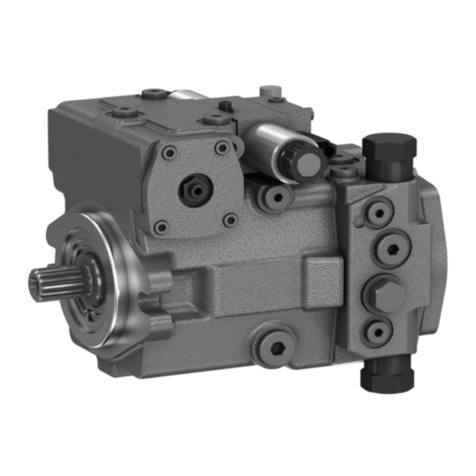
4
95 North Oak St. • Kendallville, IN 46755 • 800-742-5044 • © 2016 All rights reserved.
Operating Instructions and Parts Manual
1/2, 3/4 & 1 HP Models
c. Place power cord so that it rests
on bottom of pond away from
sharp rocks or vegetation so it
can be easily removed without
being damaged or becoming
entangled. Leave enough slack to
accommodate anticipated water
level fluctuations.
NOTE: It is suggested that the
underwater power cables be installed
in conduit from the panel to 4 -5 ft into
the water to prevent possible cable
damage.
4. Before connecting the unit to the
control center, check to insure there
is no leakage to ground. This can be
done by using an ohm meter and
setting the scale to its highest setting
(i.e. Rx100K). Connect one ohmmeter
lead to the unit power cord ground
and to one of the power conductors.
It should read infinite or at least 2
mega ohms. Repeat with the other
conductor. If reading is below 2
mega ohms on either conductor
contact Customer Service Help Line
at 1-800-742-5044.
"NO SWIMMING” AND OR
WARNING SIGNS SHOULD BE
POSTED PER STATE AND LOCAL CODES.
Water leaving
nozzle is at high
velocity and can cause bodily injury if
contact is made.
Always use caution when
operating electrical controls
in damp areas. If possible, avoid all
contact with electrical equipment
during thunderstorms or extreme
damp conditions.
System Control Center
installation and electrical
connection
1. All work must be done in compliance
with local and national electrical
codes by licensed, qualified
electrician. Refer to Fig. 6 in these
instructions or on inside of panel
door for proper wiring.
2. Control Center mounting location.
(See fig. 4 for typical installation)
a. Mount control center a minimum
of 3 feet above ground and a
minimum of 3 feet above the high
water level in a flood zone.
b. Mount control center a minimum
of 5 feet horizontally from
shoreline during maximum flood
condition. (Control center must not
be accessible from water)
c. Always keep control center door
closed, bolted and locked when not
servicing.
3. Have a licensed, qualified electrician
make final connections of fountain
and optional lights to system control
center.
4. Have a licensed, qualified electrician
install disconnecting means in
compliance with local and national
electrical codes.
5. Have a licensed, qualified electrician
make connection to power source.
6. Apply power to unit and set timers
as described in the Setting Timers
section.
7. Test the ground fault interrupter
for proper operation by depressing
the “test” button. (See Fig. 6) The
fountain should shut off. Press the
“reset” button to restart the system.
If pressing the “test” button does not
stop the unit, immediately shut off
power to unit and contact Customer
Service Help Line at
1-800-742-5044.
FAILURE TO CONNECT THIS UNIT
TO A PROPERLY GROUNDED POWER
SUPPLY MAY RESULT IN SEVERE
ELECTRICAL SHOCK.
Setting timers
NOTE: Set the pump timer for all
installations. Set the light timer when
installing the optional NightBright
lighting system.
IMPORTANT: Rotate the dial in clockwise
direction only! Rotating dial counter
clockwise will damage the timer!
1. Set the on-off time zones.
a) The timer consists of 96 setting
pins. Each represents 15 minutes in
a 24 hour day revolution. Fold the
pins inward during the time of day/
night the pump and/or lights are
desired to run.
*Do not attempt to fold in the 8 closest
pins to the “present time”. This can
damage the switch. Proceed with
these pins by turning the inner
dial clockwise until they are 4 pin
locations away from the “present
time”. Once cleared of this location,
fold inward the desired pins.
b)Rotate the dial clockwise to verify
operation of the trippers.
c) The timer may be overridden by
repositioning the manual switch in
the bottom right hand corner of
the timer. In the ON position the
output power will be continuous
regardless of the timer pin settings.
In the OFF position the output
power will be cut off regardless of
the timer pin settings. The output
power will be turned on and off at
the set points when in the AUTO
position.
2. Setting the clock. (24 hr clock)
a) Turn the dial clockwise until the
arrowhead is aligned with the
Present Time.
b)The timers include built in battery
backup for maintaining time
during power outages.








